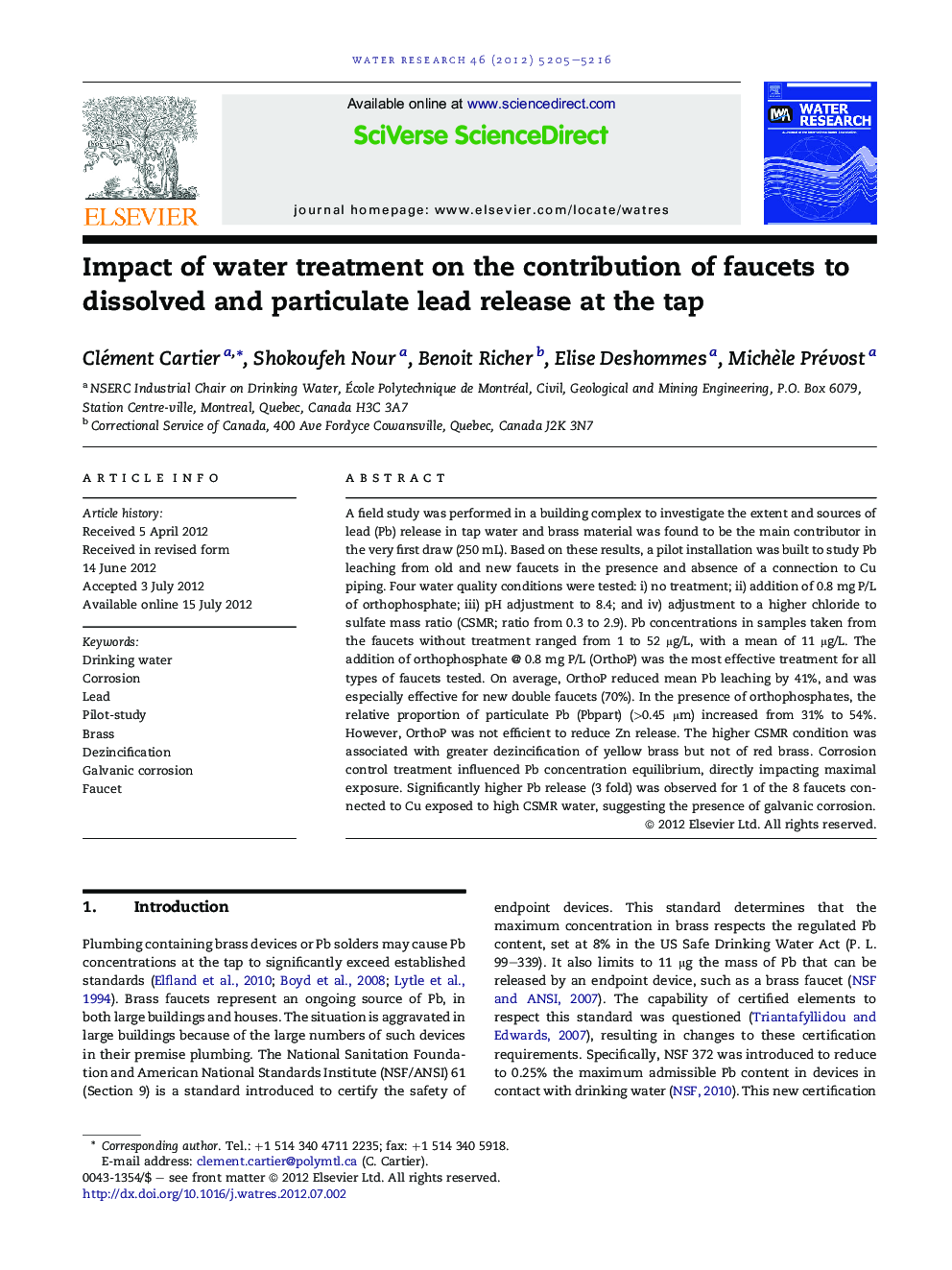| کد مقاله | کد نشریه | سال انتشار | مقاله انگلیسی | نسخه تمام متن |
|---|---|---|---|---|
| 4482747 | 1316868 | 2012 | 12 صفحه PDF | دانلود رایگان |

A field study was performed in a building complex to investigate the extent and sources of lead (Pb) release in tap water and brass material was found to be the main contributor in the very first draw (250 mL). Based on these results, a pilot installation was built to study Pb leaching from old and new faucets in the presence and absence of a connection to Cu piping. Four water quality conditions were tested: i) no treatment; ii) addition of 0.8 mg P/L of orthophosphate; iii) pH adjustment to 8.4; and iv) adjustment to a higher chloride to sulfate mass ratio (CSMR; ratio from 0.3 to 2.9). Pb concentrations in samples taken from the faucets without treatment ranged from 1 to 52 μg/L, with a mean of 11 μg/L. The addition of orthophosphate @ 0.8 mg P/L (OrthoP) was the most effective treatment for all types of faucets tested. On average, OrthoP reduced mean Pb leaching by 41%, and was especially effective for new double faucets (70%). In the presence of orthophosphates, the relative proportion of particulate Pb (Pbpart) (>0.45 μm) increased from 31% to 54%. However, OrthoP was not efficient to reduce Zn release. The higher CSMR condition was associated with greater dezincification of yellow brass but not of red brass. Corrosion control treatment influenced Pb concentration equilibrium, directly impacting maximal exposure. Significantly higher Pb release (3 fold) was observed for 1 of the 8 faucets connected to Cu exposed to high CSMR water, suggesting the presence of galvanic corrosion.
Figure optionsDownload high-quality image (137 K)Download as PowerPoint slideHighlights
► Field investigations demonstrated that brass devices are a key contributor to Pb at the tap.
► Orthophosphate reduces significantly Pb release by 41% but has no impact on particulate Pb.
► Orthophosphate addition is not effective to inhibit dezincification as pH adjustment does.
► Higher Pb and Zn release from faucets connected to Cu exposed to chloride suggesting galvanic corrosion.
Journal: Water Research - Volume 46, Issue 16, 15 October 2012, Pages 5205–5216